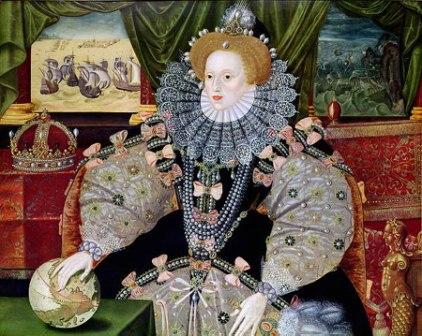 |
| A map of Ralegh's colony in Virginia, founded in 1585. British Library. Image from Lara E. Eakins. |
On this day in Elizabethan history in 1584, Sir Walter Ralegh (modern spelling 'Raleigh') was granted a patent by Queen Elizabeth I to colonize land in the New World. This settlement would become known as Virginia, in honor of Elizabeth, the Virgin Queen.
View and follow our Sir Walter Ralegh and Sir Francis Drake Pinterest board here.







